How to Check Your Pet’s Body Condition
If you’re afraid that your 4-legged friend is getting too thin or too fat, there is a simple way to find out: by looking at their body condition score (BCS). This is a number designated to your pet after assessing fat in certain parts of their body.
5-Minute Crafts has created this article to help you identify the body condition score for dogs and cats and know whether your pet is at its ideal weight. However, keep in mind that if your pet falls into one of the 2 extreme scores, either 1 or 9, they may be in danger and exposed to different health complications. Therefore, it’s advisable to seek professional help as soon as possible.
❗ Important: This article has been created for informative purposes only and does not replace medical advice. If you have doubts regarding your pet’s body condition, we suggest that you consult a veterinarian in order to get a proper diagnosis and treatment.
Dogs
Under ideal, score: 1-3
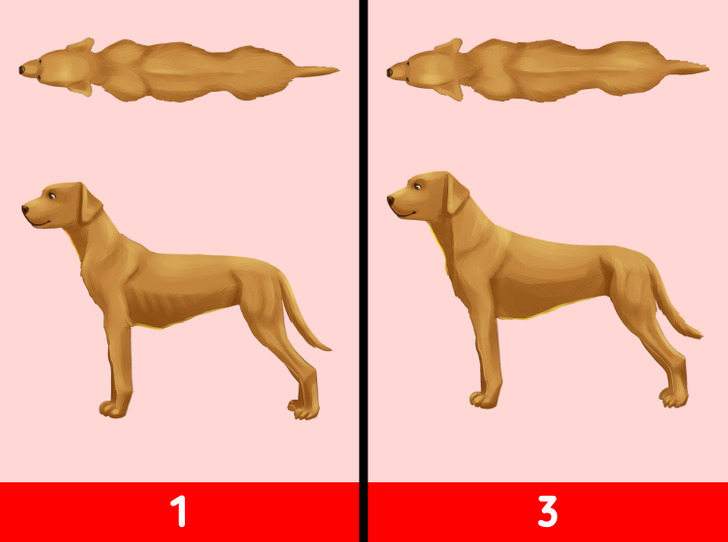
- You can see the ribs, pelvic bones, lumbar vertebrae, and all other bony prominences from a distance. Body fat is not noticeable. You can observe an evident loss of muscle mass.
- You can notice the ribs, pelvic bones, and lumbar vertebrae easily. Some other bony prominences are also evident. There is no palpable fat. You can observe a slight loss of muscle mass.
- You can easily palpate the ribs, which may be noticeable with no palpable body fat. The top parts of the lumbar vertebrae are evident. The pelvic bones seem prominent and there is a visible tuck on the waist and abdominal area.
Ideal, score: 4-5
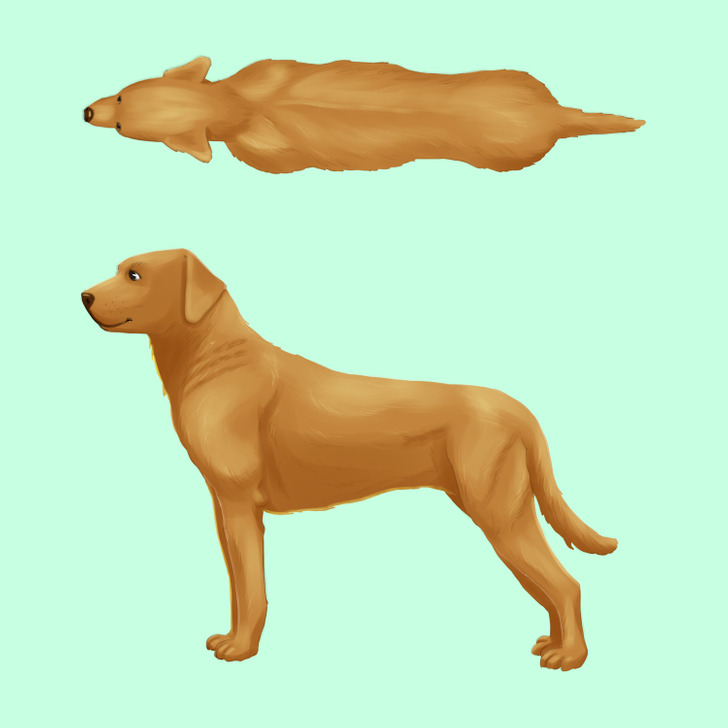
4. You can palpate the ribs easily, which are accompanied by a minimal fat layer. You can easily notice the waist when looking at your pet from above. There is a clear tuck in the abdominal area.
5. You can palpate the ribs, which have no excess fat covering. You can observe the waist behind the ribs when seen from above. The abdomen is tucked up when you look at your pet from the side.
Over ideal, score: 6-9
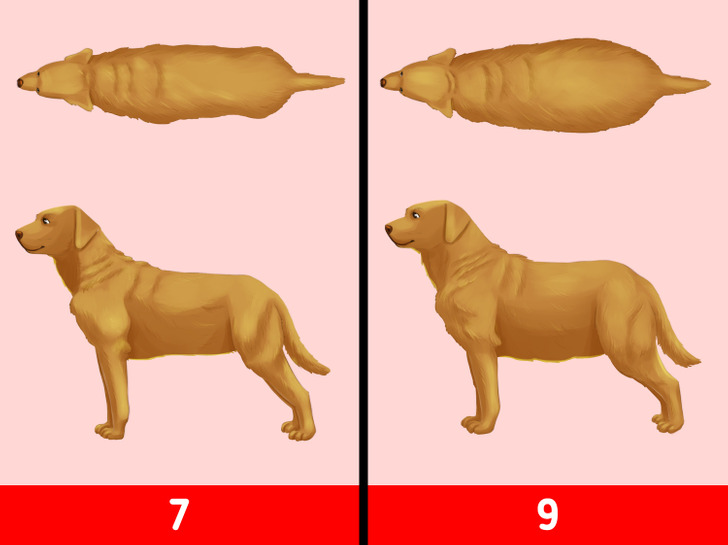
6. You can palpate the ribs, which are accompanied by a minimal excess fat layer. You can see the waist when looking at your dog from above but it doesn’t seem prominent. There is an evident abdominal tuck.
7. You can palpate the ribs with difficulty as there is a heavy fat covering. You can see fat deposits on the base of the tail and along the lumbar area. The waist is not visible or it can be barely noticed. There may be an abdominal tuck.
8. You cannot palpate the ribs, which are under a very heavy fat layer; or they are only palpable when applying a lot of pressure. You can observe heavy fat deposits on the base of the tail and along the lumbar area. There is no waist or an abdominal tuck, and you may see an evident abdominal distention.
9. You can see large fat deposits along the spine, neck, limbs, thorax, and on the base of the tail. There is no clear waist or abdominal tuck. You can observe a noticeable abdominal distention.
Cats
Under ideal, score: 1-4
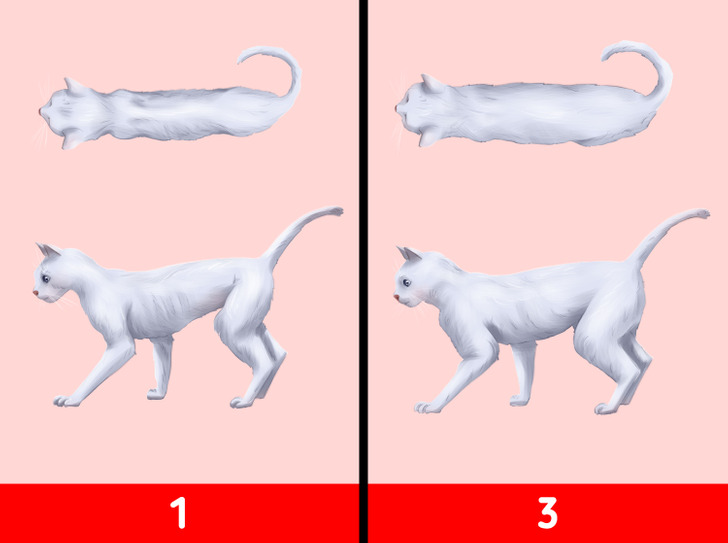
- You can see the ribs in cats with short hair. There is no palpable body fat. You can observe a prominent tuck on the abdominal area. The pelvic bones and lumbar vertebrae are easy to see and examine.
- You can see the ribs in cats with short hair. There are noticeable lumbar vertebrae with slight muscle mass, along with a prominent abdominal tuck. There is no palpable body fat.
- You can feel the ribs easily, which are accompanied by a minimal fat layer. The lumbar vertebrae are evident. You can see the waist behind the ribs, along with minimal fat on the abdominal area.
- You can palpate the ribs, which are accompanied by a minimal fat layer. The waist is visible behind the ribs. You can observe a slight tuck on the abdominal area with no fat pads.
Ideal, score: 5
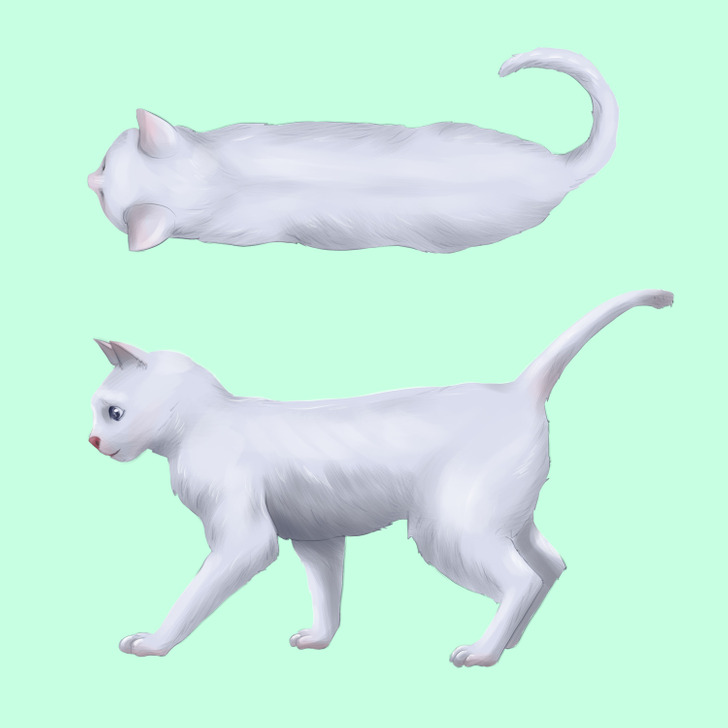
5. The cat seems well-proportioned. You can feel the ribs with a slight fat layer. The waist is visible behind the ribs, but it’s not prominent. You can observe a minimal fat pad on the abdominal area.
Over ideal, score: 6-9
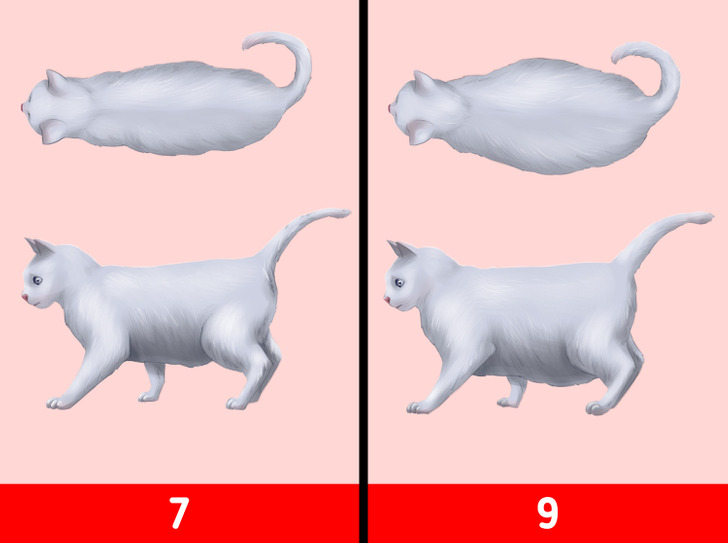
6. You can palpate the ribs with a slight excess fat layer. There is a distinguishable waist and abdominal fat pad, but they’re not obvious. There is no abdominal tuck.
7. You can palpate the ribs with difficulty and there is moderate fat covering. You can barely see the waist and the abdomen is noticeably rounded. There is a moderate fat pad on the abdominal area.
8. You cannot palpate the ribs, as there is a layer of excess fat. You cannot see the waist and there is an evident rounding of the abdomen, along with a pronounced fat pad. You can see fat deposits over the lumbar area.
9. You cannot touch the ribs, as they’re under a thick fat layer. There are heavy fat deposits over the lumbar area, limbs, and face. You can observe a distention of the abdomen and you cannot see the waist. There are large abdominal fat deposits.